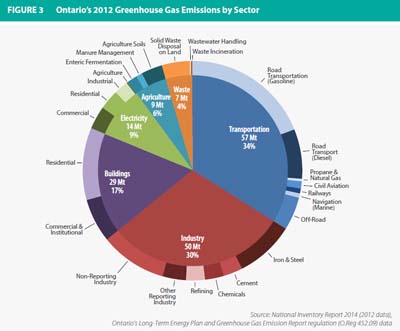Article
Ontario announces a cap-and-trade regime to regulate greenhouse gas emissions
4
On April 13, 2015, Ontario Premier Kathleen Wynne announced that her province will join Québec and California's cap-and trade-program for the regulation of greenhouse gas emissions.
Ontario's participation in the program is intended to limit and, over time, significantly reduce its emissions.
The primary mechanism of a cap-and-trade system is prescribed and enforceable greenhouse gas emission caps. These are established for industries and commercial enterprises in specified sectors of the economy. Those regulated are required to acquire allowances to emit to their capped levels. Allowances may be traded between regulated entities. The cost of the allowances, either when issued by government or as set in the allowance trading market, creates a cost for the emission of carbon, the price incentive to reduce emissions.
A cap-and-trade system may also permit offset credit creation - the creation of credits which may be used just as emission allowances are used, although to a limited percentage of one's total emissions. Offset credits may be derived from projects in unregulated sectors which limit or avoid greenhouse gas emissions. They may only be created in accordance with approved protocols, such as in Québec for landfill gas capture.
The design of the system is critical to its effectiveness, the regulatory burden it imposes and its cost to the economy. Ontario's announcement on Monday indicates there will now be a period of consultation in the coming months on design elements. However, much of the design can likely be gleaned from what is already in place in Québec and California, and the work of the Western Climate Initiative (WCI), which is the foundation for the Québec - California regime.
Fundamental to the system will be the levels of the caps - to what percentage of historic emissions for each sector are the caps to be set? What, if any, credit will be available for early action, pre-regulation greenhouse gas reductions? Which sectors will have to pay for their allowances, and how will those prices be set? Which sectors may be granted allowances gratis as a means of easing their adjustment into the system? What projects will be considered for offset credit creation, and under what offset protocols? And of course we look forward to an announcement as to the first compliance period.
Ontario's Climate Change Discussion Paper 2015 identified the relative contribution to greenhouse gas emissions in the Province by commercial sector:

Clearly transportation, industrial and building emissions are the largest contributors to the Province's emissions. Emitters in those sectors likely have the largest stake in the design of the cap-and-trade regime.
Just prior to the PanAm games, on July 7, 8 and 9, 2015, Ontario will host the Climate Summit of the Americas in Toronto. Representatives from North, South and Central America's national and sub-national governments are expected to be present. Might this be a platform for announcements of further expansion of the Ontario-Québec-California carbon market?
NOT LEGAL ADVICE. Information made available on this website in any form is for information purposes only. It is not, and should not be taken as, legal advice. You should not rely on, or take or fail to take any action based upon this information. Never disregard professional legal advice or delay in seeking legal advice because of something you have read on this website. Gowling WLG professionals will be pleased to discuss resolutions to specific legal concerns you may have.

